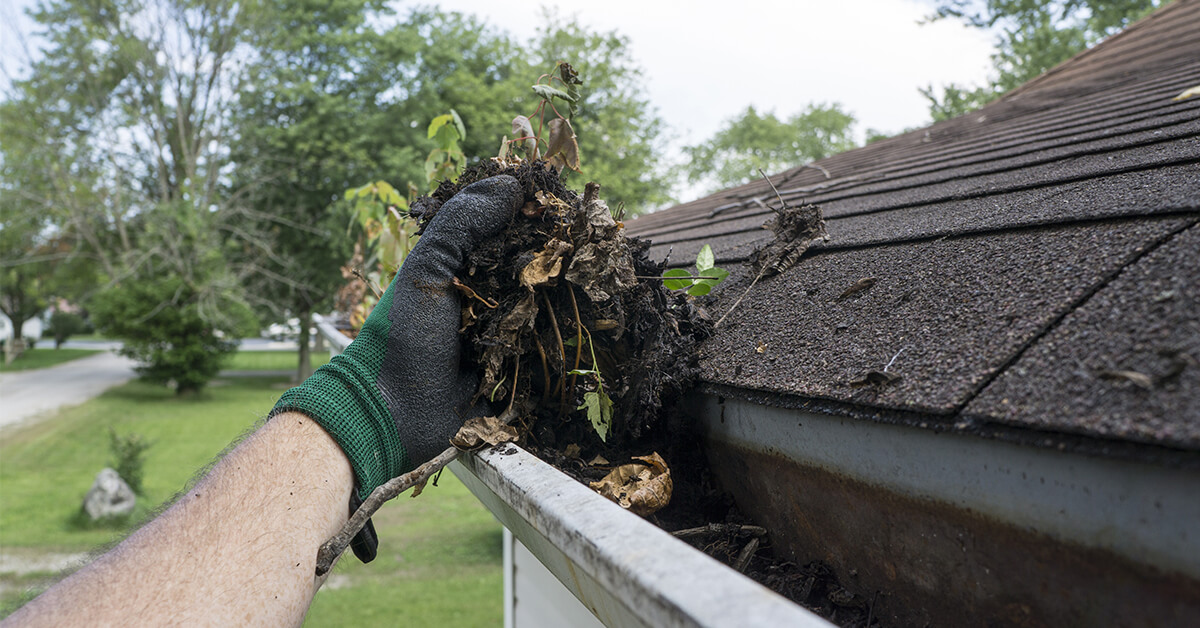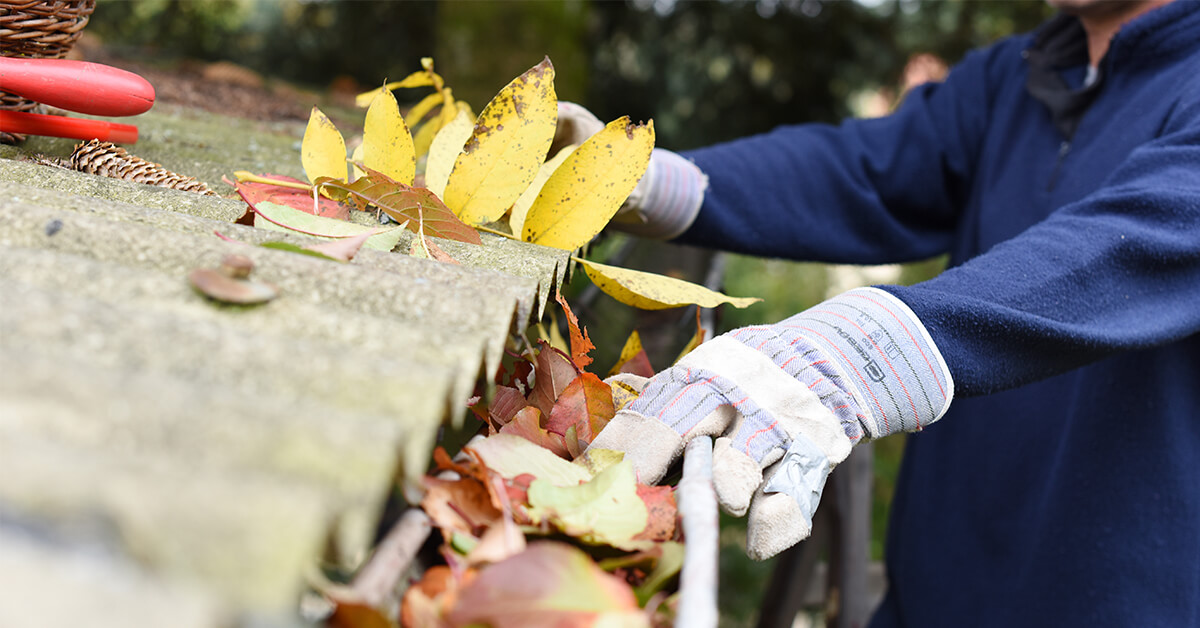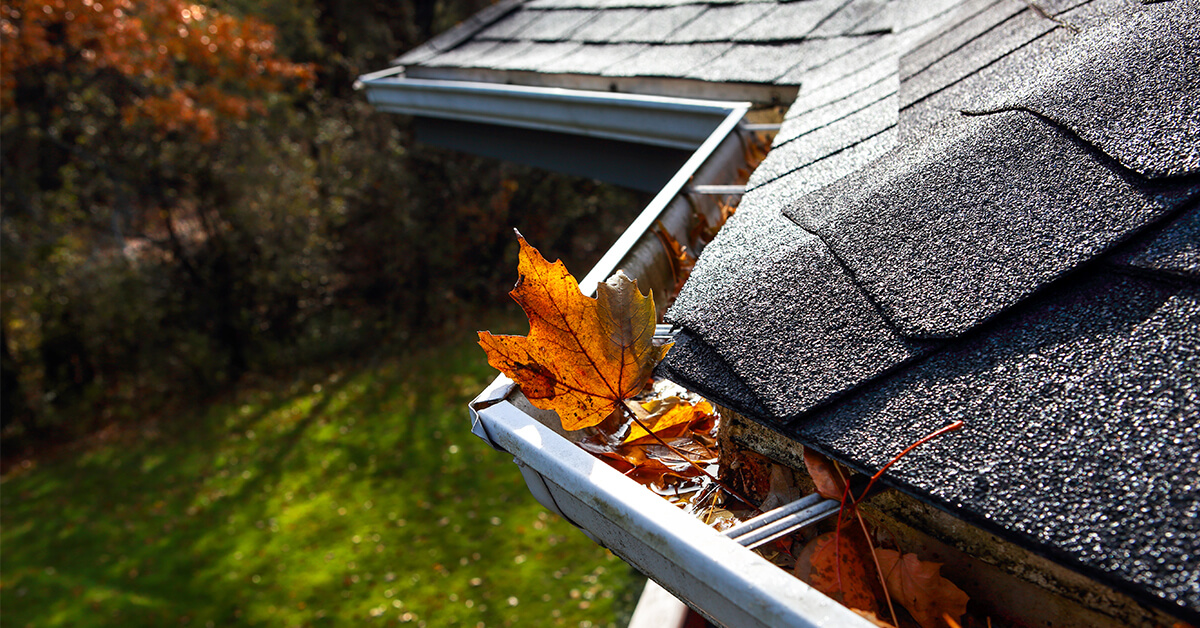Gutter downspouts can be one of the areas most overlooked for cleaning by homeowners. Although they comprise part of the “exterior” of a house, they are typically tucked away in a corner and hidden from view. However, cleaning gutter downspouts, when properly done, can save you a great deal of time and money, plus spare you an awful lot of headaches.
Cleaning gutter downspouts is an essential part of maintaining and caring for your home, and having the right information and knowing what tools to use will help you do the job right and maybe convince you to regularly get your gutter downspouts cleaned out. Getting more information is especially useful if you’re not keen on trial-and-error experiences and want expert results without losing more time.
This post will provide the key reasons why clean gutter downspouts are important to the overall “health” of your home. It will also inform you about the kind of cleaning schedule you should maintain, as well as help you identify the methods and tools for cleaning gutter downspouts.
Gutter Downspout Cleaning 101
Can you remember the last time you had your gutter downspouts cleaned out? If you don’t, it may be time to hunker down to it. When it comes to a regular cleaning schedule, it’s a common mistake to ignore downspouts. Maybe it’s because they’re hidden and easy to forget about; or maybe because just thinking about how tedious the job is makes you tired before you even begin. Downspouts, however, provide an essential function, which is to keep rainwater away from your home. In doing so, they protect the structural integrity of your home—and its value, too.
If debris (that’s your leaves, sticks, and grime buildup) backs up, it’ll clog the entire gutter. When this happens, water spills over the sides of the gutter instead of running through the spout. This can deteriorate the paint job on your house much faster.
A blocked spout can also cause water to pool in the wrong places, making it flow back into the house. This can lead to mold growth, the weakening of your foundation, and even basement flooding. Basically, it can cause your home to literally fall apart.
Now that you know all that, you probably want to get down to business and start cleaning, asap. Gutter downspout cleaning, however, isn’t as simple as it sounds. You may realize later on that the curtain rod you thought of sticking into the gutter isn’t long enough, or that the job takes longer than you may have imagined. If you’re likely to regret the decision of DIY-it, hiring a professional pressure cleaner might be worth it. Not only does it save you time, but if your gutters are in need of minor repairs, professional cleaners can easily take care of them. You can also rest assured that they can do the job swiftly, safely, and efficiently.
If you want to keep your head—and your home—above water without the hassle, get in touch with a professional cleaning service company. If you’re in the US Mid-Atlantic, request a free quote from Excel Residential Services today.
Your Cleaning Schedule: Time is of the Essence
Prevention always trumps cure. This is also true in cleaning gutter spouts. What could be done in two to four hours with a regularly maintained spout will definitely take much longer and cost way more with a badly clogged one. Plus, think about the rest of the repairs that may have to be done if the poorly collected water leaks into the crawl spaces and wall cavities of your home. Such widespread damage, which can be very, very expensive, could easily be avoided if you have a regular cleaning schedule in place: ideally once in the Spring, and another one in the Fall.
However, there may be times when you have to call in professionals, even outside of your set schedule. And you don’t need your gut to tell you this. If water is constantly sitting in your gutters, if the spouts themselves are sagging and bowing in places, or if there are other signs of leakages, it’s time to holler for the experts.
Most popular and efficient ways to clean your gutter downspouts
If you have the spare time and energy, and your home is not more than a story high, taking the DIY route may not be a bad idea. We’ve rounded up some of the most effective ways to clean gutter downspouts:
Using a garden hose on the ground
It’s best to tackle gutter cleaning when your feet are firmly planted on the ground. When your spouts aren’t completely clogged, you can use garden hosing to clear away the superficial dirt that’s gathered there. This method is the safest because you don’t have to use a ladder. You’ll need to use an extension, though, like a curved water wand, if you’re going for hard-to-reach places in the gutter. Come properly attired in stain-resistant clothing as you’re likely to brush up with water, leaves, and twigs that may spill out of the gutter.
Using a wet or dry vacuum on the ground
A vacuum hose and its various curved attachments can be an option if you simply want to get rid of the leaves, twigs, and water that have accumulated in your gutter. Once most of the debris has been taken out, hose down the gutter downspouts with a garden hose.
Before we go any further, we’ll need to talk about a few safety tips, since these next two methods will be up in the air. The first one is to use a sturdy extension ladder (ditch the stepladder!) that’s been fitted with stabilizer arms. Second, it’s best to work with someone who can stabilize the ladder while you're on it and hand you the tools as you go along. This can also keep you from getting dizzy spells from the constant climbing up and down. That someone on standby can likewise come to the rescue should any accident or mishap happen.
Using a leaf blower on a ladder
Back to our high-level method of leaf blowing. A leaf blower can come in handy when you don’t want to use your hands to manually pick out and scrape off the debris stuck in your gutter. Leaf blowing is a pretty straightforward procedure. Work your way from one end of the channel to the other, and blow out blockages as you go along. When you’re done, flush out any remaining leaves or twigs with a hose.
Using your hands
For those who love gardening and using their hands to pull out roots, this can be an oddly relaxing activity. However, for many people, this is one method they probably wouldn't stick their fingers in, as it can get quite messy. Get on a ladder and slowly pick out and remove the leaves and debris that the methods mentioned earlier can’t get rid of. Then, using a hose, wash down the rest of the dirt and grime (don’t forget your hands!).
If you have the know-how, the right tools and equipment, plus huge reserves of patience, energy, and time (or the willingness to do a repeat job if you don’t succeed the first time), then, by all means, go for it. However, if you want to save time and money in the long term, and keep the stress and wrinkles at bay, then call a pressure cleaning service for a power washing.
Power washing
Power washing is the most effective way to clean gutter downspouts because it uses the two-in-one power duo of high-pressure water and heat to push everything down and clear our spouts. The hot water can cut through the cakey, crusty, and hard surfaces that regular pressure washing with lower temps of H2O can’t do. As tempting as it is to pull a Rambo and just blast away, power washing has its risks, especially if not done by a professional.
For one thing, the strong sprays from the power washers can hurtle objects that may strike and injure people close by. Also, without proper training, you can face the risk of electric shock and even carbon monoxide poisoning with gasoline-powered engines in small or partially closed spaces. And we haven’t even discussed the damage to property that a bad DIY job can wreak. Although power washing or cleaning can be done by the homeowners themselves, that may not be the most prudent decision.
Tools of the trade
If you still want to forge ahead and be a Fix-it Felix, roll up your sleeves and tool up with these handyman’s gizmos, as well as other must-haves:
- For Garden Hosing: a garden hose (with a rigid tube and curved end), a curved water wand or any similar extension, clothing that can be soiled, safety glasses.
- For Wet or Dry Vacuuming: a wet or dry vacuum (with a hose and curved attachments), a garden hose, clothing that can be soiled, safety glasses.
- For Leaf Blowing: a powerful leaf blower with a nozzle, a sturdy extension ladder, a rag (to keep leaves from getting inside the gutter as you work), garden hose, clothing that can be soiled, safety glasses, a dependable companion.
- For Manual Labor: your hands, protective hand gloves, a sturdy extension ladder, clothing that can be soiled, safety glasses, a dependable companion.
- For Power Washing: a power washer, a safety manual on how to use the equipment, proper training, liability insurance, an operating license (and a professional pressure cleaning company who can provide you with all these).
All in the gutter
Hopefully, this guide can help you see cleaning gutter downspouts in a different light, realize the importance of maintaining a regular cleaning schedule, and maybe even make cleaning gutter downspouts sound less intimidating. When you are properly informed, you can make the best decision for yourself, regardless of what specific DIY method you choose or whether you’d rather trust the pros on this one.
If you’d rather chill and get excellent results instead of winging it, availing of the services of experts may be the wiser choice. Get a professional to clean your gutter downspouts and see the visible difference. Call Excel and request a free quote today!




